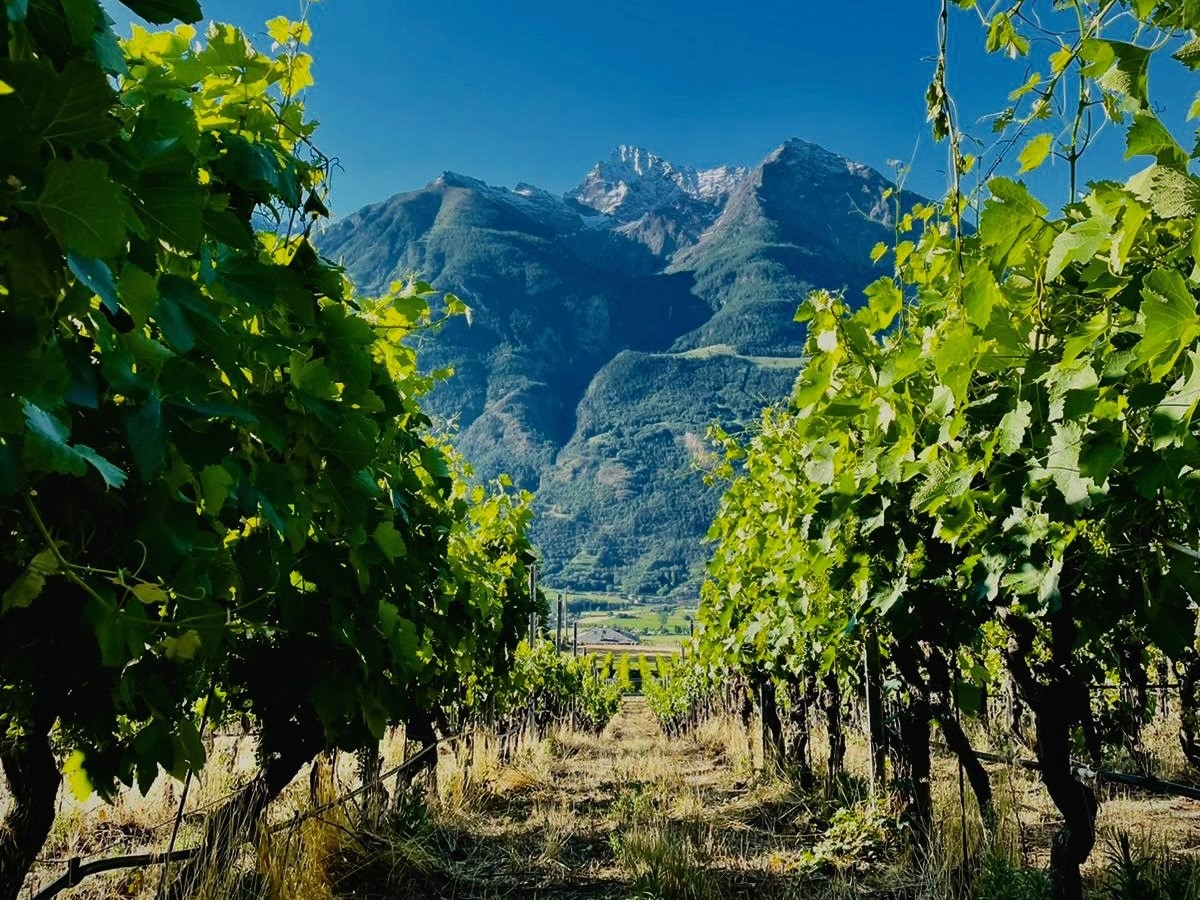
Quart, Valle d'Aosta
With plantings from 700 to 1000 meters (2,297 - 3,281 feet), Rosset exemplifies the geographic and climatic challenges of Valle d’Aosta, where low yields make quality the essential focus. Nicola Rosset and his father Cesare planted their first vineyards in 2001, to accompany the raspberries, saffron and genepy that they farm and distill. Cornalin, Chardonnay, and Syrah are near the family’s raspberry crops in St Cristophe, in rocky/sandy soil structured with small stones. Later plantings were added in Chambave, known for its Moscato Bianco, and in Villeneuve, where their Petite Arvine and Pinot Grigio grow—in sandy, silty soils shot with slate above the quartz and granite bedrock, at elevations of up to 1000 meters (3,281 feet). The genepy herb—the artemisia—grows even higher than that, at an elevation of 1,670 meters (5,479 feet). It blooms with the fortitude that embodies this alpine territory—and those who endure to farm it.
Rosset is recognized for protecting the region’s native vines and for demonstrating the promise of Valle d’Aosta’s wines. Indigenous varieties like Cornalin, Petite Arvine and Petit Rouge are preserved through the family’s devotion, while their Syrah and Chardonnay grapes achieve a completely unique expression in the alpine terroir. Nicola Rosset now leads the winery in crafting wines that repeatedly earn such awards as Gambero Rosso’s Tre Bicchieri. The farm is powered solely by renewable energy. The winery, in Quart, features photovoltaic panels on the front of the building, with electric car charging ports provided for visitors. Organic farming practices are used. Two different types of clay vessels are utilized for aging, alongside steel tanks and wood vessels of varying size: the Tava amphora, artisanally crafted by one family for three generations, and the Orcio Toscano, a type of vessel used to hold wine and oil since the Etruscan age.
Annual production: 50,000 bottles.
More Info
Wines Available
Latest wine scores in international magazines:
2022 Petite Arvine: 93 James Suckling
2020 Petite Arvine Sopraquota 900 - Tre Bicchieri, 91 WE + Hidden Gem
2022 Cornalin: 90 James Suckling
Location
Valle d’Aosta
Winery established
2001
Total acreage/ Elevation
35 acres / 2,297 – 3,281 feet
Age of Vines
10 – 40 years old
Farming methods
Organic
Varieties
Cornalin, Petite Rouge, Syrah, Nebbiolo
Petite Arvine, Chardonnay